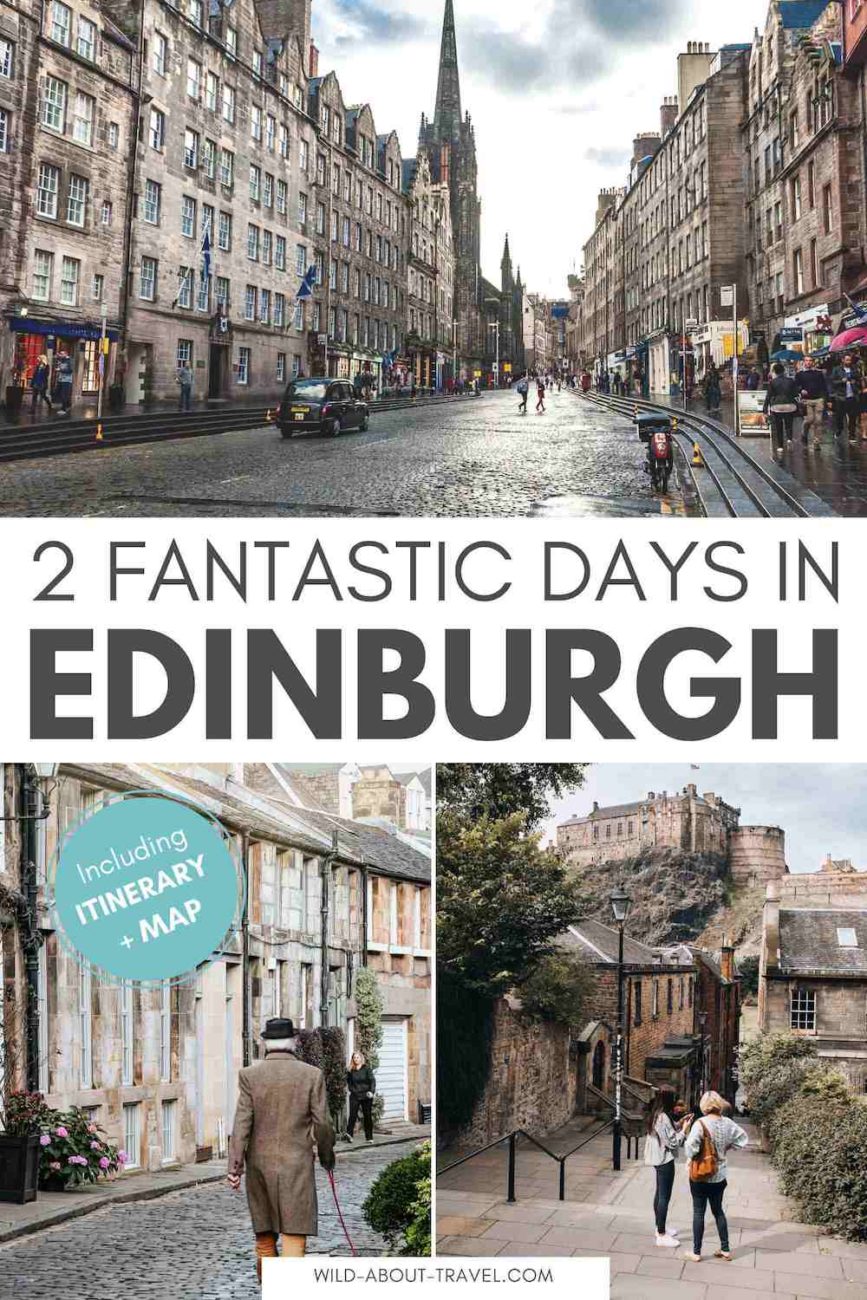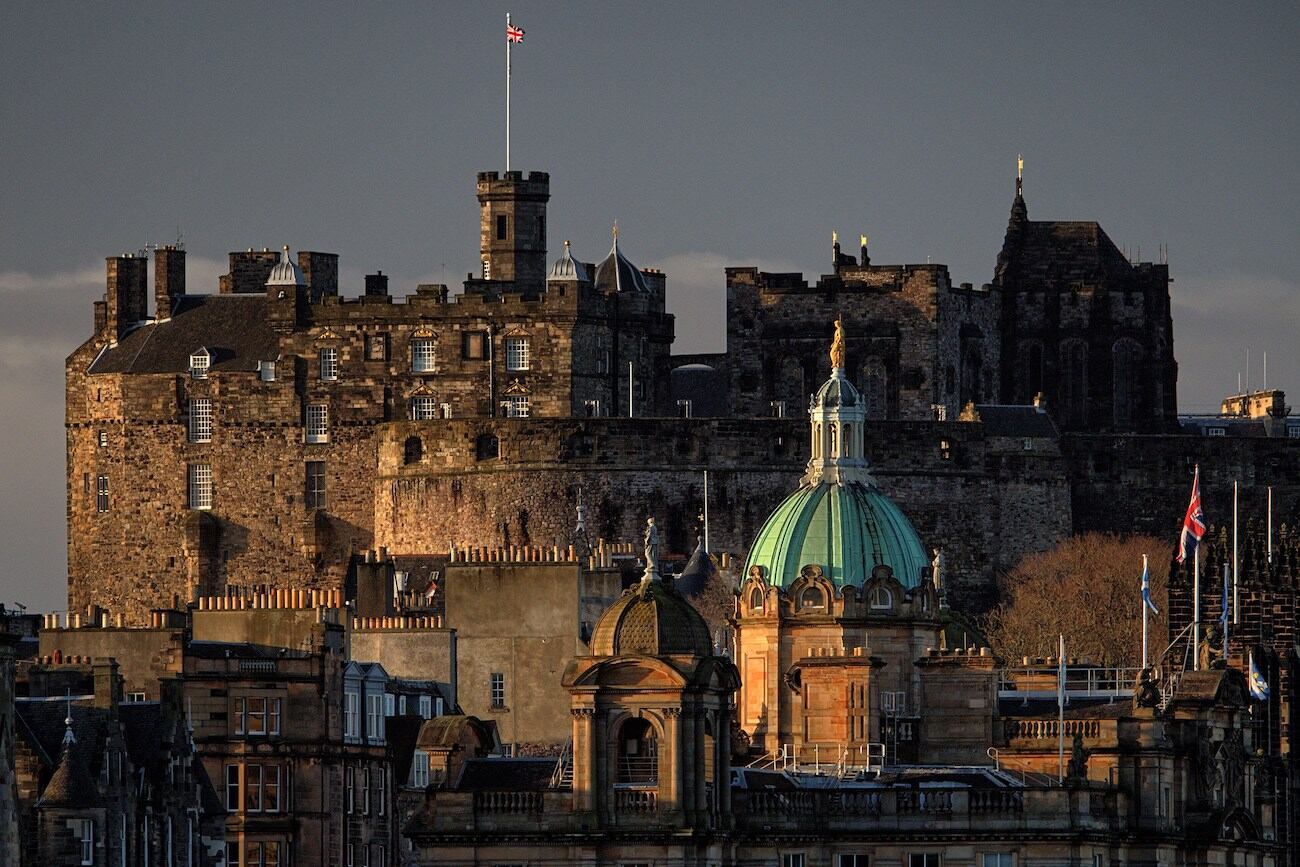Planning to spend a weekend in Edinburgh and wondering what to see and how to plan your time? This guide is a suggested itinerary of what to see in Edinburgh in 2 days to help you make the most of your visit to the most beautiful city in Scotland!
Although relatively small, Edinburgh, the capital of Scotland, has so much to offer its visitors that you’ll want to be sure to see all the main attractions.
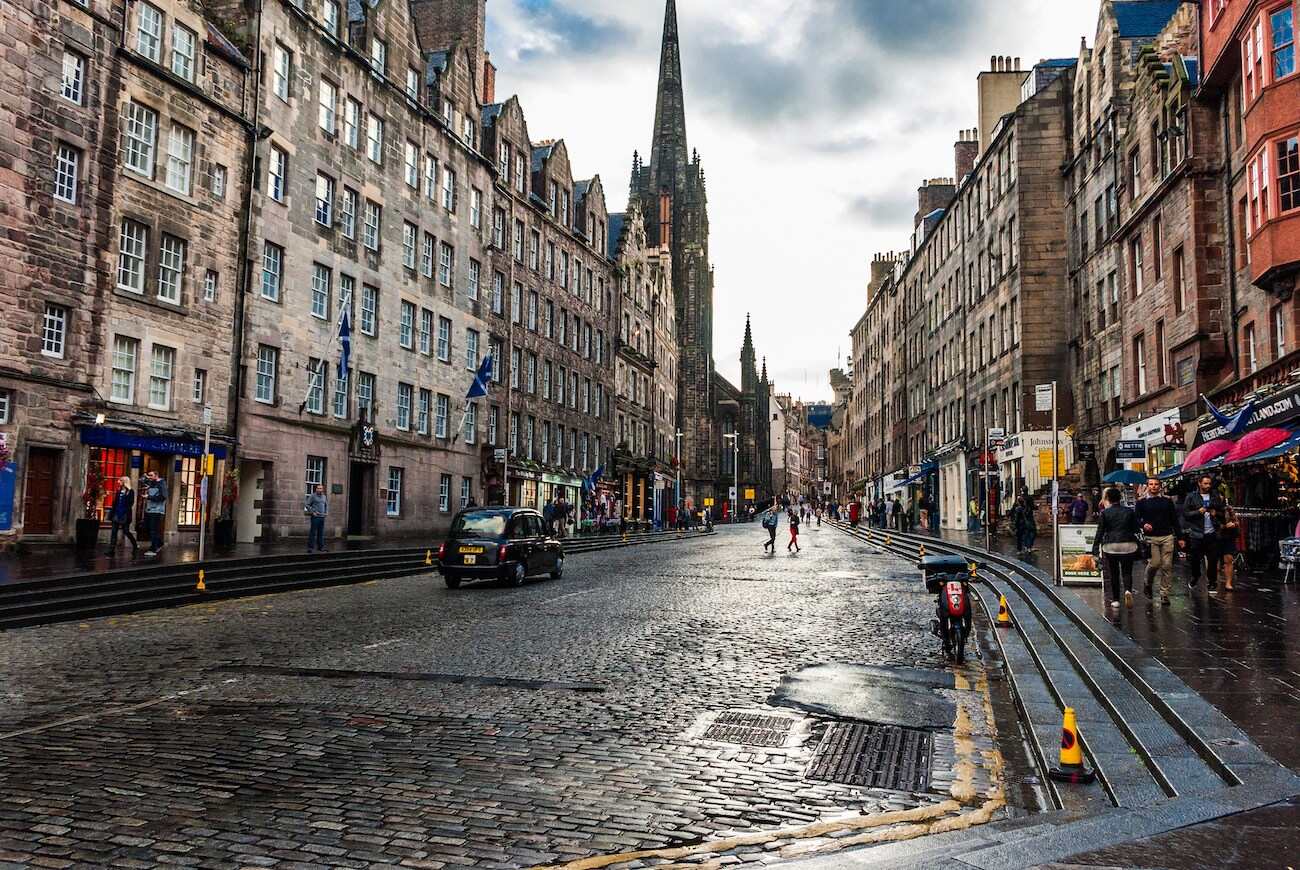
In fact, Edinburgh’s historic centre is pretty compact, and most places of interest are within walking distance. This makes a two-day Edinburgh itinerary fun and not too tiring. Keep in mind, however, that there are many ways to visit the city. Much will depend on your interests, but also on the time of year and the weather, which is often unpredictable. Although this Edinburgh itinerary was made to help you make the most of your time, you can also use it just as an inspiration and adapt it to what’s most appealing to you.
Are you ready to find out what to see in Edinburgh in 2 days? Great, let’s go!
Edinburgh 2 day itinerary: Map

Tips for a weekend in Edinburgh

These tips will help you start planning your 2 days in Edinburgh and get an unforgettable trip in this fascinating city.
Best time to visit Edinburgh: Although a year-round destination, the most favourable time to visit Edinburgh is from May to August, when temperatures are pleasant.
Getting from the airport to the centre of Edinburgh: You can choose between a streetcar, bus, and train. The best and fastest way is to take the Airlink bus or, alternatively, a private transfer.
Planning ahead: Leaving with everything organized is a must! Edinburgh is an attractive destination, especially during the weekend, and the major attractions are booked well in advance. Plan what you want to do and purchase tickets early, at least for what you don’t want want to miss. Book early also your accommodation in Edinburgh, especially if you’re on a budget.
Where to stay in Edinburgh: There is not really one better neighbourhood than another. However, if you’re spending only 2 days in Edinburgh, better stay in a central place. You’ll have all the attractions within…walking distance! For two great choices, check out The Place Hotel or the Holiday Inn Express Edinburgh City Centre, an IHG Hotel: both are in a good location for sightseeing, but not in the midst of the hustle and bustle.
Getting around: You probably won’t need much public transportation, and there’s no better way to explore Edinburgh than walking. Yet, If you prefer to walk less, a good option is the Hop-On Hop-off bus. I used it in Edinburgh, Bath, Bristol and more cities across the world.
What to wear in Edinburgh: The weather can change very quickly, even in summer. So dress in layers and make sure your outer layer is waterproof ahead of the infamous Edinburgh rain! Also, wear comfortable shoes, particularly if you plan to do a lot of walking in the Old Town with its cobblestone streets and numerous steps.
Insurance: Great Britain is out of the EU, all the more reason to get travel insurance!
Must-see in Edinburgh: While the city is overall beautiful, you can’t miss visiting Edinburgh Castle, the Royal Mile, a whiskey distillery (Hey baby, you’re in Scotland!) and, why not, for fans even the Harry Potter Magical Walking Tour.
Day 1: Edinburgh Old Town

Let’s start your weekend in Edinburgh in the fascinating Old Town, which preserved most of its medieval layout intact. Wandering in the street, surrounded by beautiful buildings, is like making a journey into the past. And it’s no wonder that Edinburgh Old Town and the Neoclassical New Town (built between 1767 and 1890) were inscribed as a UNESCO World Heritage Site in 1995.
Perched atop a volcanic rock towering over the city, the Castle is Edinburgh’s oldest building. Although the earliest written document referring to the fortress dates back to the reign of Malcolm III Canmore (1058-93), archaeological excavations showed that Castle Rock was inhabited by man as early as the Iron Age.
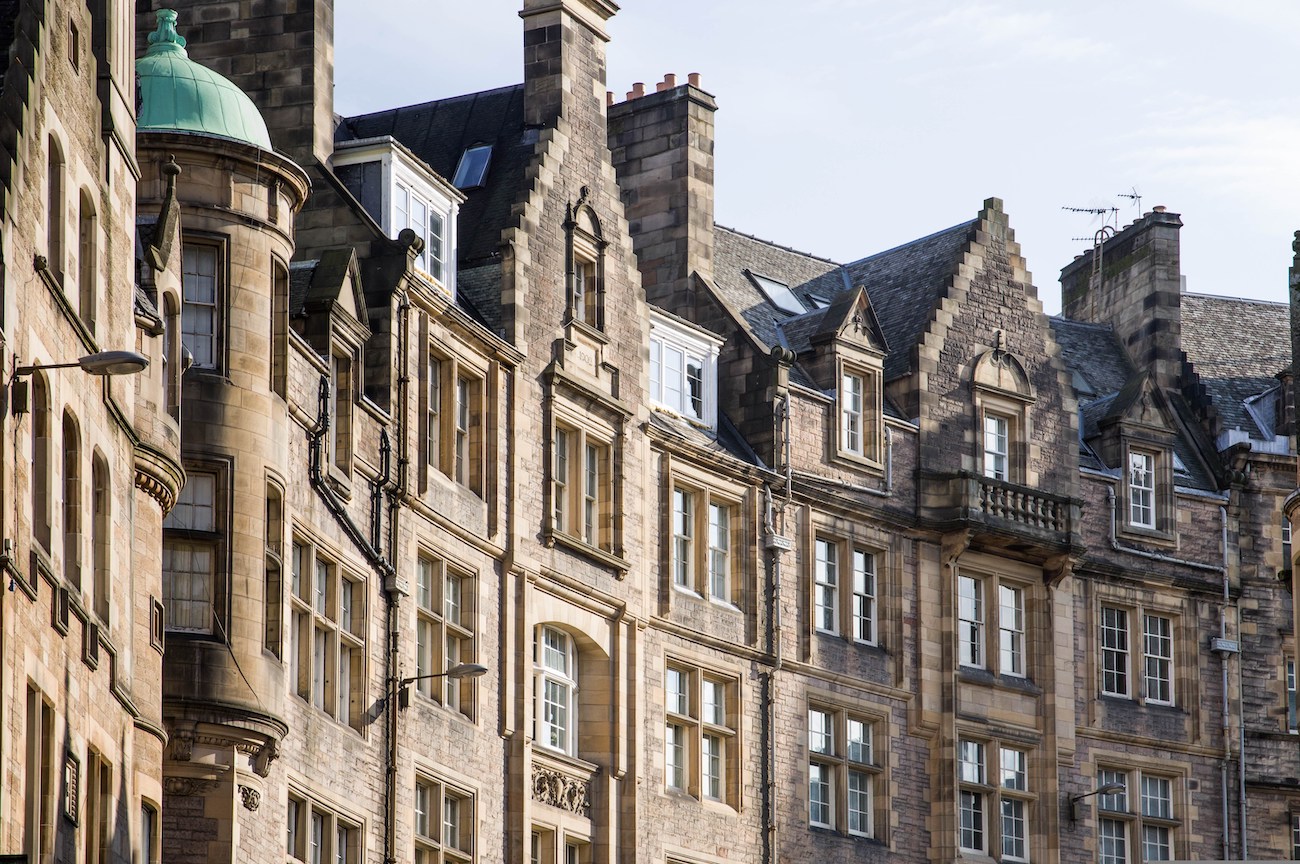
Over the centuries, the city developed and expanded around the Castle. Dwellings and shops began to spring up along what is now known as the Royal Mile. This famous road climbs down from the Castle to Holyroodhouse Palace, where the Augustinian Abbey of Holyrood once stood. Founded in the first half of the 12th century, the Abbey has been in ruins since the 18th century but holds an undeniable charm.
TIP: Don’t miss getting back to the Old Town in the evening, when the atmosphere becomes even more intriguing.
In the second half of the 16th century, conflicts with the English ended up shaping the city. The building of the Flodden Wall to protect from enemy attacks forced the population inside, preventing Edinburgh’s expansion. As the population continued to grow, the lack of space to erect new buildings led to the city developing in height. While this initially astounded visitors who were confronted with buildings as high as 14 stories at a time when New York skyscrapers certainly did not exist, over time, this turned into a major problem. The streets were smelly and dirty, people lived together in rooms that were too small, and Edinburgh was one of Europe’s most populated and unhealthy cities.
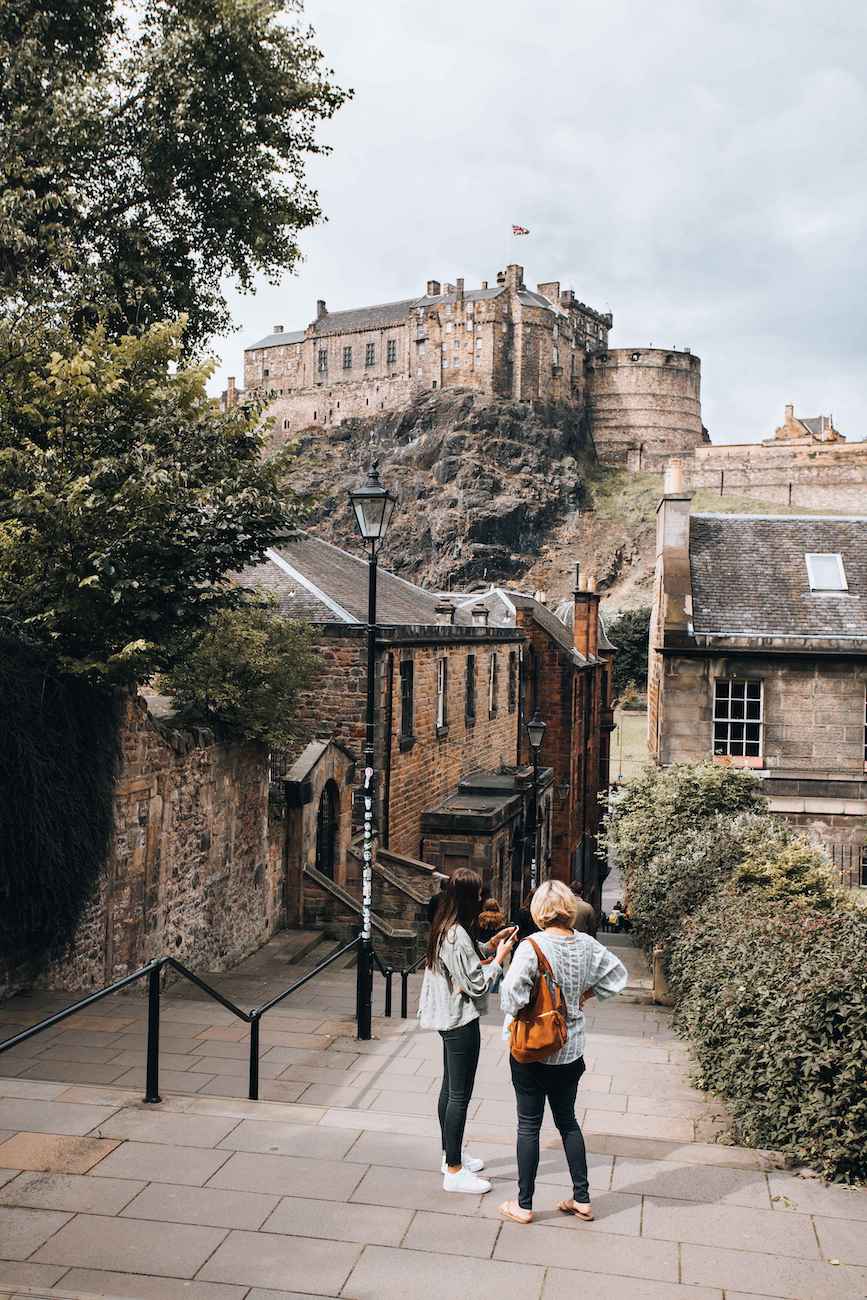
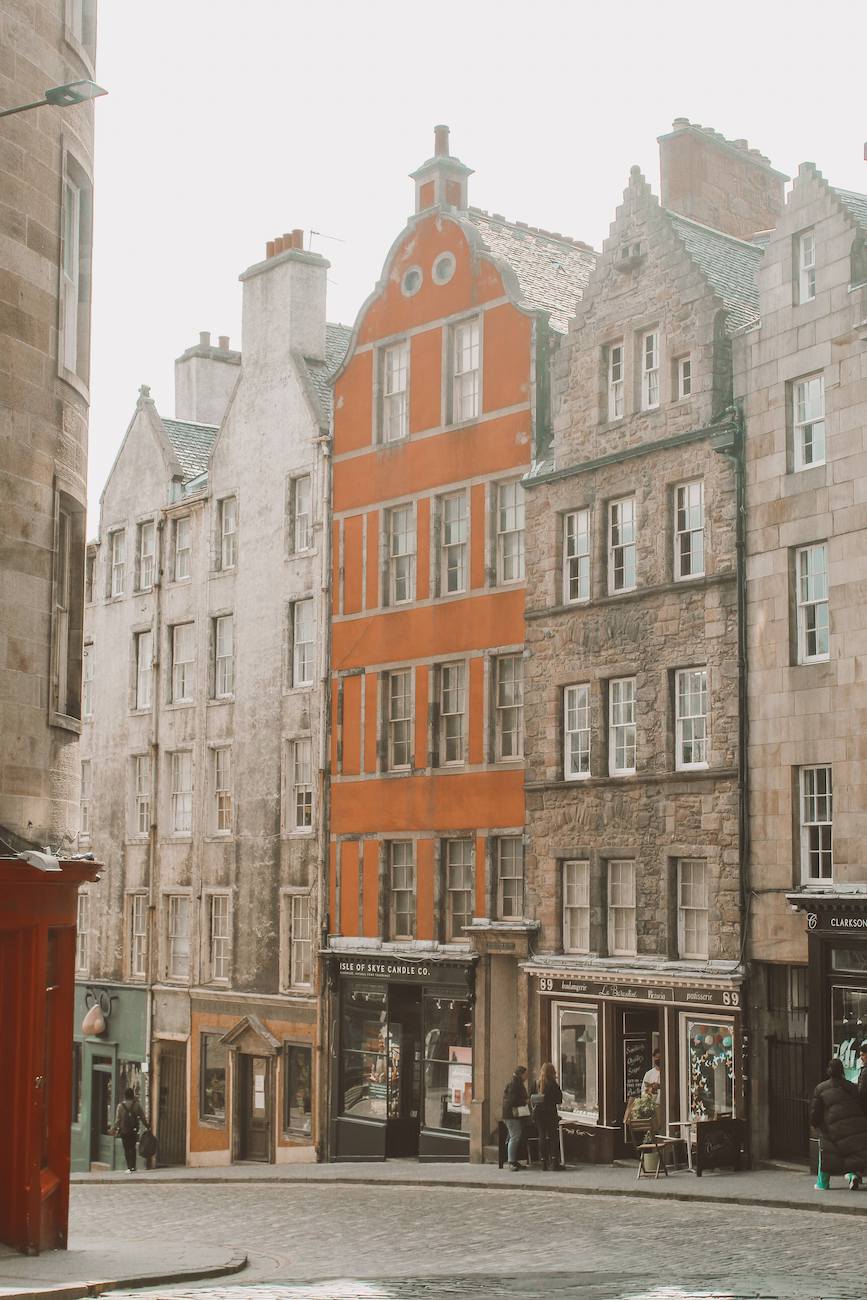
It wasn’t until the second half of the eighteenth century that plans were made for a new neighbourhood outside the walls, giving birth to what is now known as New Town, which I recommend you visit during your second day in the city.
Let’s see now what you absolutely must see in the Old Town during the first of your two days in Edinburgh.
Edinburgh Castle
The Castle is definitely the city’s most famous attraction and one of Edinburgh’s must-see attractions during your stay in the Scottish capital.
From the top of the rock, Edinburgh Castle dominates the entire city, creating a truly unique setting. It is the oldest landmark in the Scottish capital and it was the scene of fierce battles between the Scots and the English. As you might imagine, like many castles in Europe, its appearance changed several times over the centuries, and what is visible today dates from the 12th century onward.
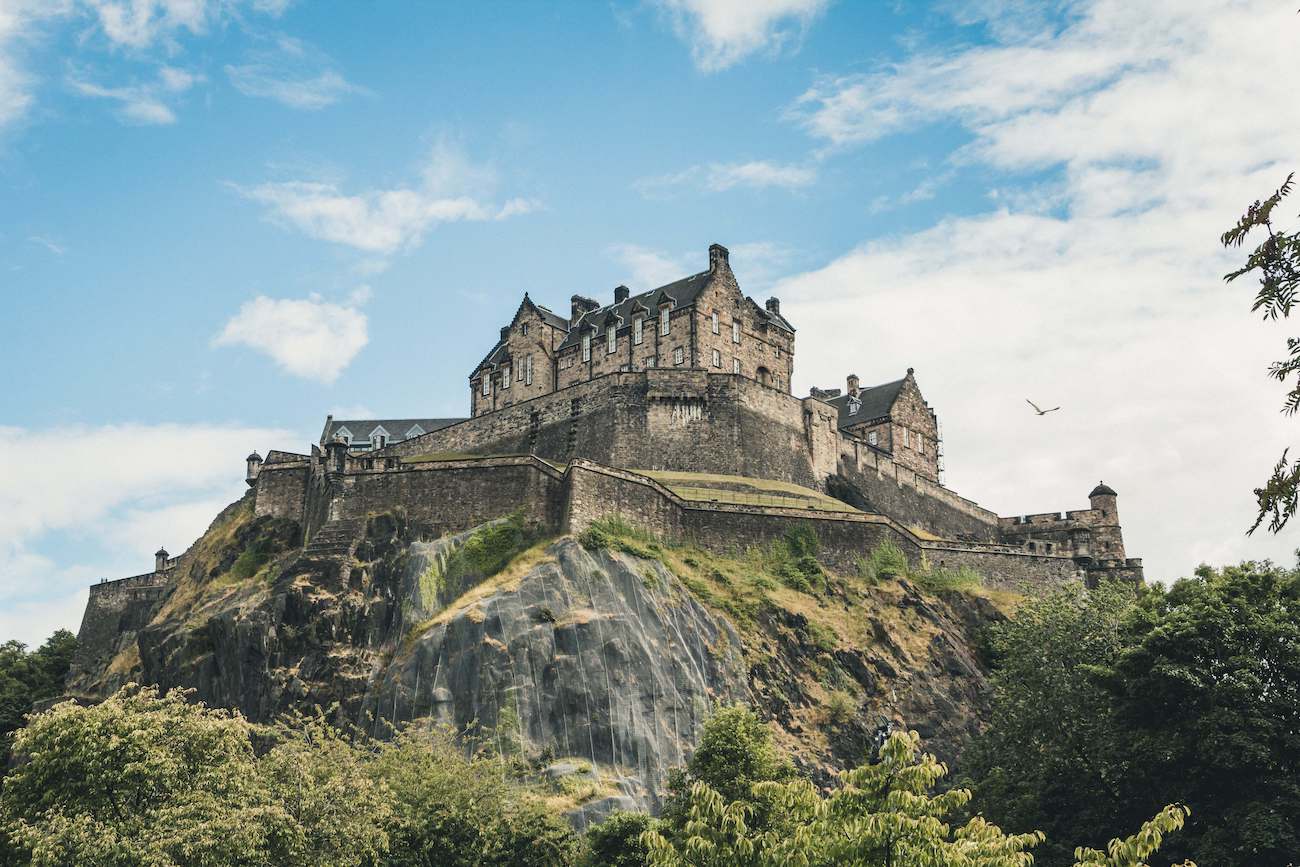
Aside from its scenic settings, there are many things to see inside the fortress:
- St. Margaret’s Chapel: considered the oldest building in the city, it was built in the 12th century, although it was abandoned after the Reformation.
- The National War Museum: an exhibit devoted entirely to Scotland’s military history from the creation of the first standing army to the present day.
- The Royal Palace: the former residence of the Kings and Queens of Scotland. Unfortunately, nothing remains of the furnishings of yesteryear, but inside the Clock Tower, you can admire the Honours of Scotland, namely the Crown, Sceptre, and Ceremonial Sword. These are the oldest insignia in the United Kingdom.
- The War Prisons: prison cells reconstructed in their probable late 18th-century appearance.
- Argyle Battery: the best spot to take in the view of the city. From here, every day at 1 pm sharp, the famous One O’Clock Gun fires a shot.
The visit to the Castle will take you at least a couple of hours (more if you want to go deeper) thus my advice is to buy tickets in advance so you don’t lose time in line.
BOOK YOUR GUIDED TOUR OF EDINBURGH CASTLEGrassmarket
After visiting the Castle, my advice is to go to the nearby Grassmarket.
Once home to one of Edinburgh’s historical markets and the site of executions, today it’s one of the city’s most vibrant areas. Here you will find many shops and lots of pubs and restaurants where you can stop for a quick lunch before continuing your exploration of the Old Town.
Grassmarket executions ended in the 18th century. But some of the traditional pubs, such as Maggie Dicksons or The Last Drop, preserve the bloody history of Edinburgh’s dark past. So if you like historic pubs, Scottish food, and tradition, don’t miss to pop into one of them (or both).
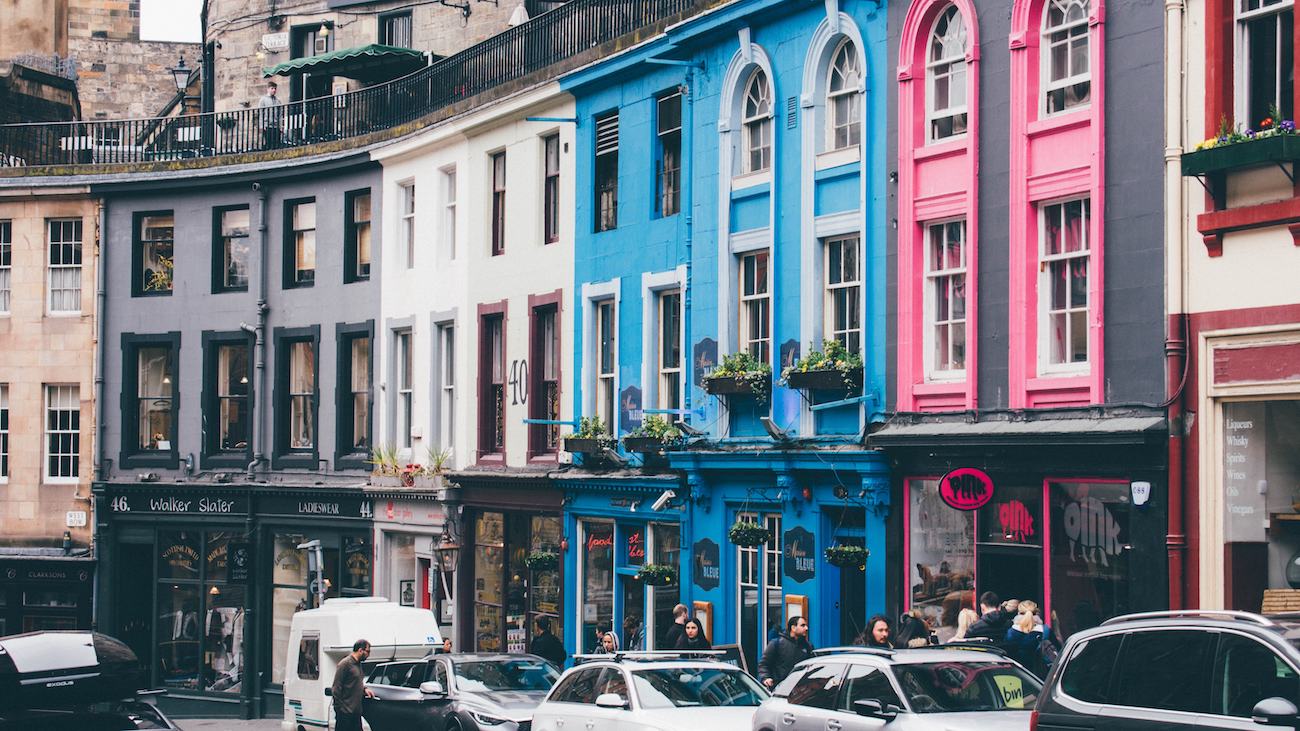
To reach Grassmarket you’ll have to walk through the colourful Victoria Street, which is said to have inspired J.K. Rowling’s Diagon Alley in the uber-famous Harry Potter saga.
Greyfriars Kirkyard
Not far from the Grassmarket is what is, perhaps, the most famous Edinburgh cemetery: the Greyfriars Kirkyard.
It may seem strange to you that among my recommendations of what to see in Edinburgh in two days, I decided to include such a seemingly macabre place, but the Scottish capital is fascinating precisely because of its somewhat dark facet.
There are many accounts of this place, in fact, as one of the most haunted sites in the city.
The most famous ghost is Bloody George Mackenzie. The story goes that after the Battle of Bothwell Brig in June 1679, the defeated Presbyterian Covenanters were held captive near Greyfriars Kirkyard on Mackenzie’s orders. Most of them, after suffering unspeakable tortures, died and were buried here. George Mackenzie died in 1691 and, ironically, was buried in a mausoleum not far from the Covenanters, whose death he was responsible for.
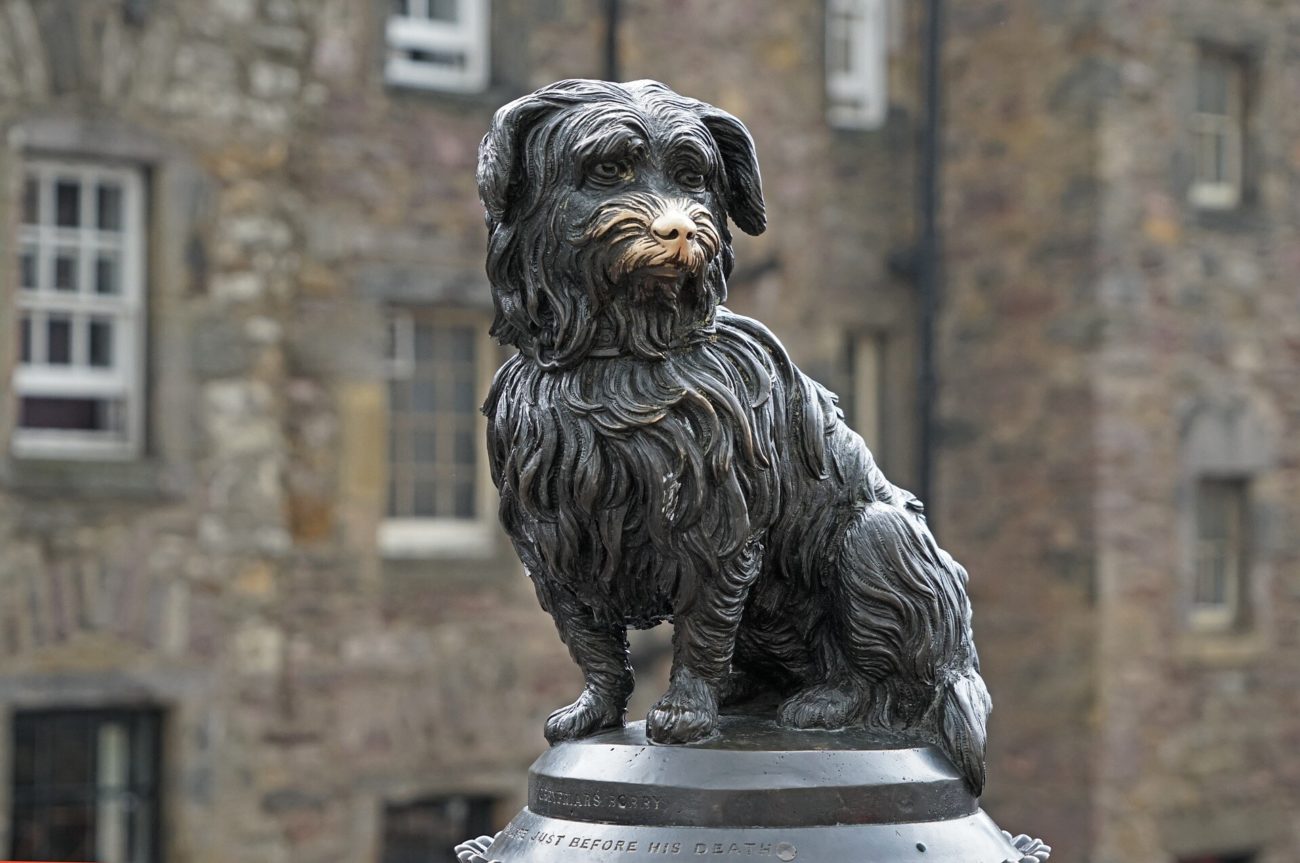
It is said that his ghost rested in peace until 1998, when he was awakened by a homeless man who was trying to reach his coffin. Since then, several episodes have been reported in which the infamous ghost has reappeared, scaring passersby and onlookers.
Even if ghosts are not your thing, visiting Greyfriars Kirkyard is a must if you are a Harry Potter fan. Here, indeed you can see the Riddell tomb. Does the name ring a bell? The connection to Lord Voldemort seems to be quite obvious.
Finally, on your way out, don’t forget to stop by the grave of the famous Greyfriars pooch Bobby and his owner John Gray. The story goes that after John died, Bobby spent the rest of his days watching over him day and night.
If you want to know more about this fascinating and haunted cemetery, there’s no better way than to take a tour with a guide telling you all about Greyfriars Kirkyard.
BOOK THE GREYFRIARS TOURRoyal Mile
Now it’s time to enjoy a stroll along the Royal Mile, the most important and famous street in Edinburgh’s Old Town. This long straight road connects Edinburgh Castle with Holyroodhouse Palace, the official residence in Scotland of the British monarch.
A fun fact? The Royal Mile is almost a Scottish mile long (equal to about 1804 m), hence its name.
Within the premises that once housed craftsmen’s businesses or homes, you will now find souvenir stores, restaurants, and pubs. Although it’s become very touristy, the Royal Mile still holds a charming atmosphere. Actually, the Old Town’s most famous street has retained its former architectural appearance. As you stroll along, you can admire old historic buildings or wander into some of the narrow lanes (called close) to discover tiny pretty squares or secret gardens.
The Royal Mile is not exactly a single street and takes on different names along the way. Although everyone commonly refers to this thoroughfare as the Royal Mile, starting from the Castle down to Holyrood Palace we would have to speak of Castle Esplanade, Castlehill, Lawnmarket, High Street, Canongate, and Abbey Strand.
Castle Esplanade and Castlehill
Castle Esplanade is the large square in front of the fortress’ entrance gate and was built in 1753 as a parade ground. Today, it’s used as an outdoor stage for important events like the Edinburgh Military Tattoo (taking place in August) and concerts by celebrities like Elton John, Tom Jones, and many others.
Castlehill is the short road starting right from the Esplanade. Here you can see the former Church of Tolbooth-Highland-St. John’s, which is now home to the Edinburgh International Festival Society and, further on, two of Edinburgh’s most famous attractions: the Scotch Whisky Experience and the Camera Obscura and World of Illusions.
The Scotch Whisky Experience small group tour is an unmissable opportunity to learn about the whisky-making process and learn all about Scotland’s national drink. As this was not enough, you’ll get to see one of the world’s largest collections of Scotch whisky!
BOOK THE SCOTCH WHISKY EXPERIENCEAcross the street, get ready for a magical experience you may not have heard of. Nothing is as it seems at the Camera Obscura and World of Illusions, featuring more than 150 illusions on five floors. Be sure to leave the Bewilderworld experience for last; it will blow your mind away! The Camera Obscura Show is unlike anything you’ve ever seen. It’s a Victorian-style virtual reality experience you won’t forget.
Lawnmarket
This very short road separates the site of the Edinburgh International Festival from Bank Street, where you can admire the magnificent baroque building of the Bank of Scotland.
Lawnmarket, as the name suggests, once housed a cloth market that, over the centuries, specialised in linen items. Here you’ll find possibly the highest concentration of souvenir stores on the entire Royal Mile, but between a magnet and a postcard, don’t forget to take a look at the buildings, among the oldest in the city.
High Street
Walking further down, you’ll reach High Street, the most famous area on the Royal Mile. Don’t miss visiting the Saint Giles Cathedral, overlooking Parliament Square.
Nearby you can see the Parliament House – the former seat of the Scottish Parliament -, the equestrian statue of King Charles II, the Market Cross where city edicts were proclaimed, and, finally, one of the city’s most visited attractions, Mary King’s Close, which is reportedly haunted by a ghost.
Canongate and Abbey Strand
Canongate was once located outside the walls and was considered a hamlet in its own
The name refers to the fact that it was a stretch of road used by the canons of Holyrood Abbey.
The last stretch of the Royal Mile is the Abbey Strand that runs from the Square of the new Scottish Parliament to the entrance of Holyrood Palace.
Palace of Holyroodhouse
Finally, the last stop on this first-day Edinburgh itinerary. The Palace of Holyroodhouse, standing at the end of the Royal Mile, is the official residence of the British monarch in Scotland.
The palace was founded in 1128 by King David I as a monastery, and only later, starting in the 16th century, was the site enlarged and converted into a palace. Almost nothing survived from the original constructions, and the oldest part still visible is the tower, known as Mary Queen of Scots Chambers, which is one of the Palace’s main attractions.
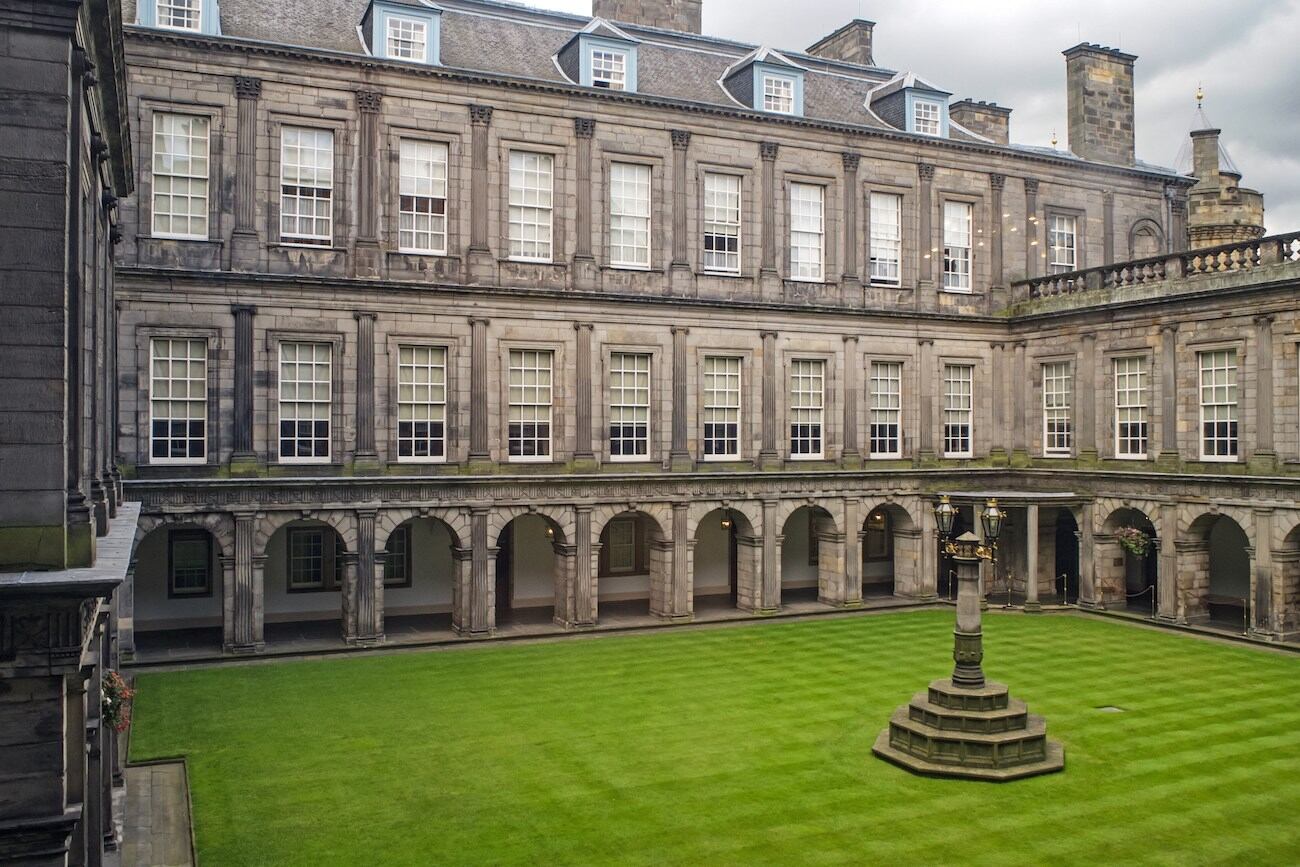
Inside, you can visit the royal apartments to admire the spectacular furniture, carpets and decorations, the Throne room, and much more. You’ll also get the chance to enter the Great Gallery, the room housing 96 portraits of real and legendary kings of Scotland, which is still used for official banquets.
BUY THE HOLYROOD PALACE ENTRANCE TICKETThe visit to Edinburgh Old Town ends at the ancient Holyrood Abbey, of which only a few ruins remain today. It’s a romantic and charming place and the perfect way to end the first day of your weekend in Edinburgh.
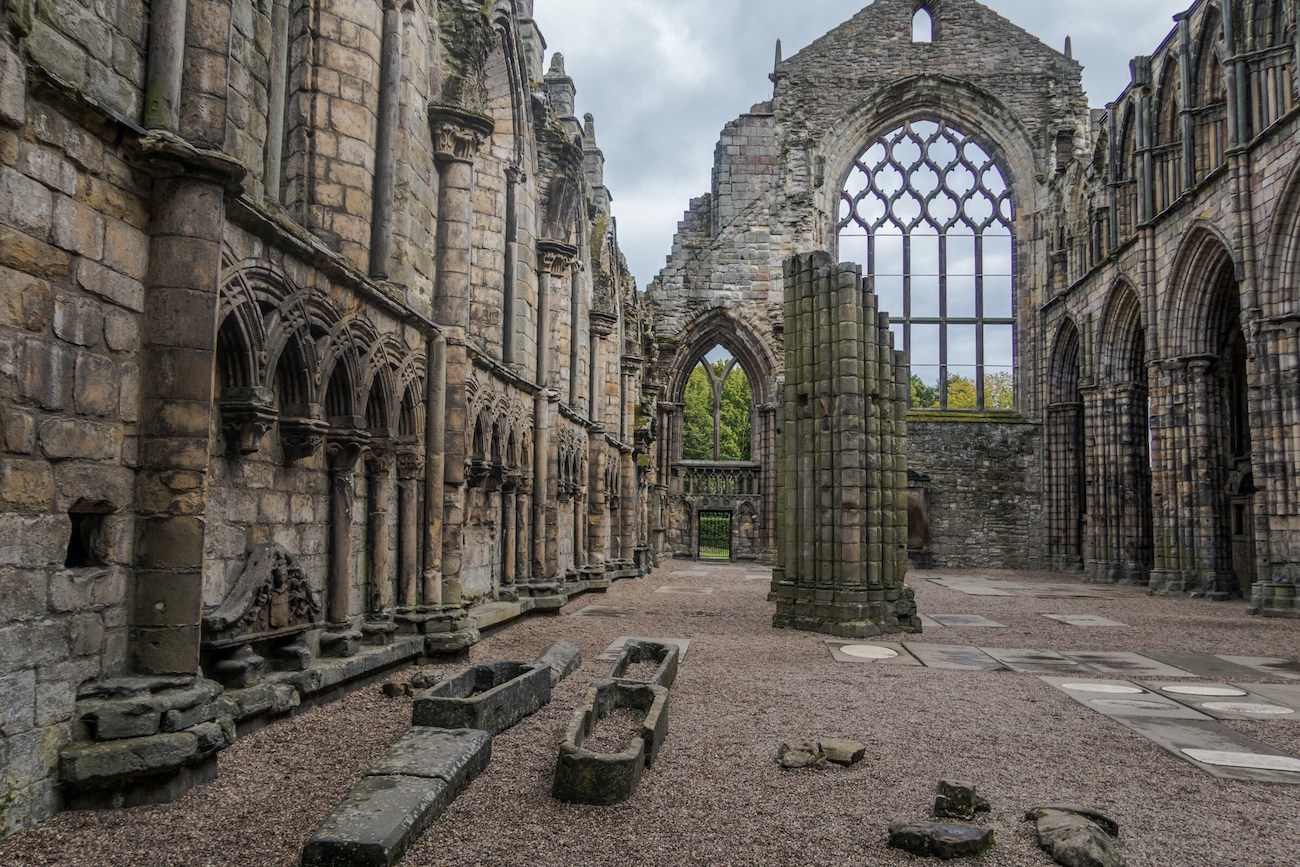
Day 2: Edinburgh New Town and other attractions

On the second day of your weekend in Edinburgh, I suggest you visit the New Town and its surroundings. Leaving the historic city centre, you’ll indeed discover equally fascinating attractions.
Princes Street Gardens
The first stop is Princes Street Gardens, the most famous and beloved city park among the city’s residents. Princes Street Gardens is also a great place to have breakfast! Sir Walter’s Cafe is a charming little kiosk that sits on the east side of these beautiful gardens and has outdoor seating. The perfect place to start your Edinburgh itinerary on day two.
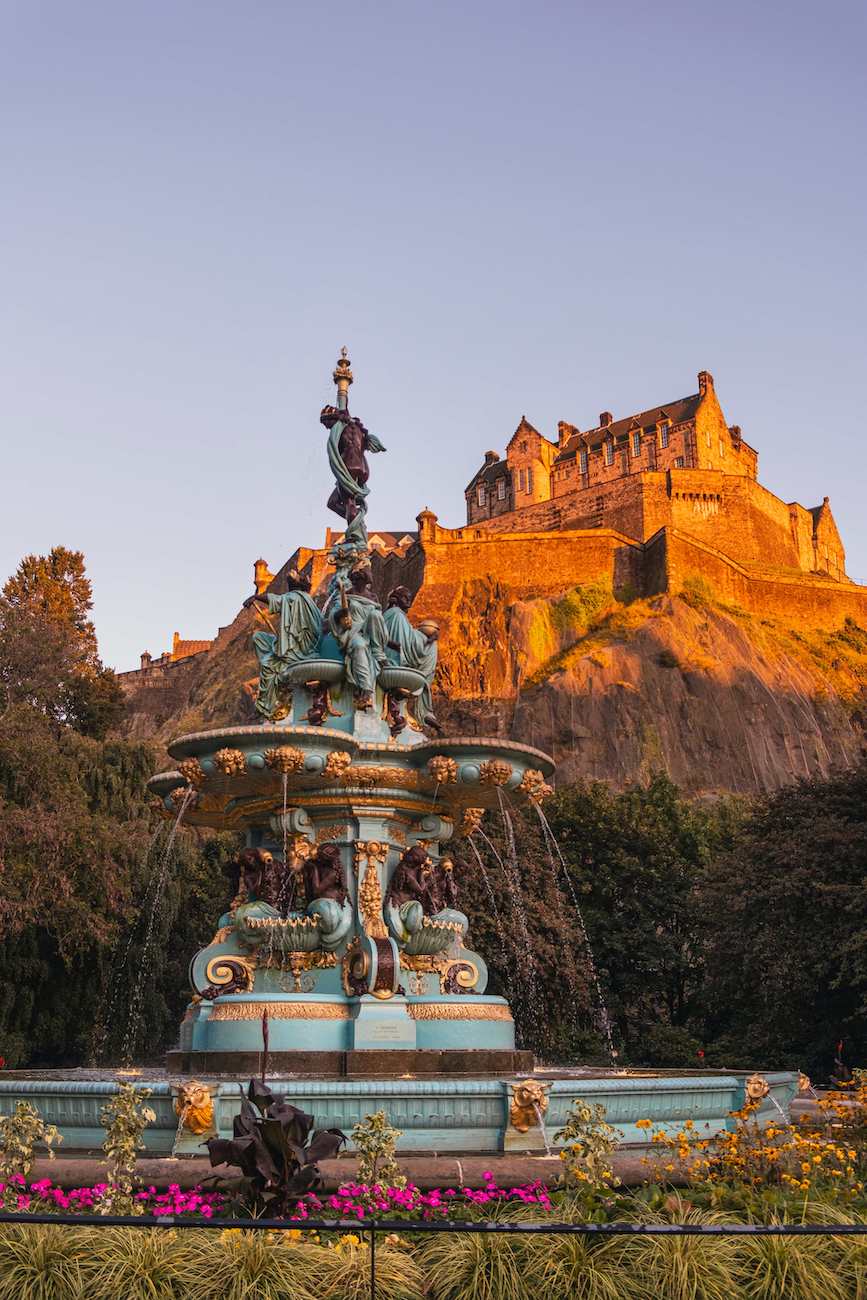
The gardens were created after the founding of the New Town between 1770 and 1820, covering the old bed of the Nor Loch, a marshy lake that, for a long time, was used as a natural defence of the city and castle. In its waters, during the Middle Ages, women suspected of witchcraft were drowned. In the following centuries, the Nor Loch became relevant for defence purposes to counter English invasion attempts. The Nor Loch was also frequently used by smugglers, and murderers considered it the ideal place to hide corpses. In addition, over the centuries, sewage discharges from the Old Town ended up heavily contaminating the lake. Thus, in the early nineteenth century, the water basin was drained to create the beautiful Princes Street Gardens.
Today they are a gathering place in any season, and in winter, they host one of the most beautiful and fascinating Christmas markets in Europe.
Scott Monument
Strolling in Princes Street Gardens you’ll encounter the Scott Monument, an impressive Gothic-style building erected in honour of the Scottish writer Sir Walter Scott. The lower part features a white marble statue of the writer with a pen in his hand and in the company of his dog. The monument’s upper part, with the huge pinnacle, is decorated with more than 60 sculptures of characters from the author’s works.
The monument was inaugurated in 1846 and today is open to the public every day. If you feel like climbing its 287 steps, you’ll get a fantastic view of the city.
Edinburgh New Town
Time to wander through the streets of Edinburgh New Town and discover the other side of the Scottish capital.
Don’t be fooled by its name, though. You won’t find a modern area dotted with skyscrapers or futuristic buildings. In fact, as mentioned earlier, the New Town was built in stages between 1767 and 1850 and still retains most of the Georgian and neoclassical buildings of the period. This neighbourhood was built to alleviate the problem of overcrowding in the Old Town and immediately became a favourite place for wealthy residents.
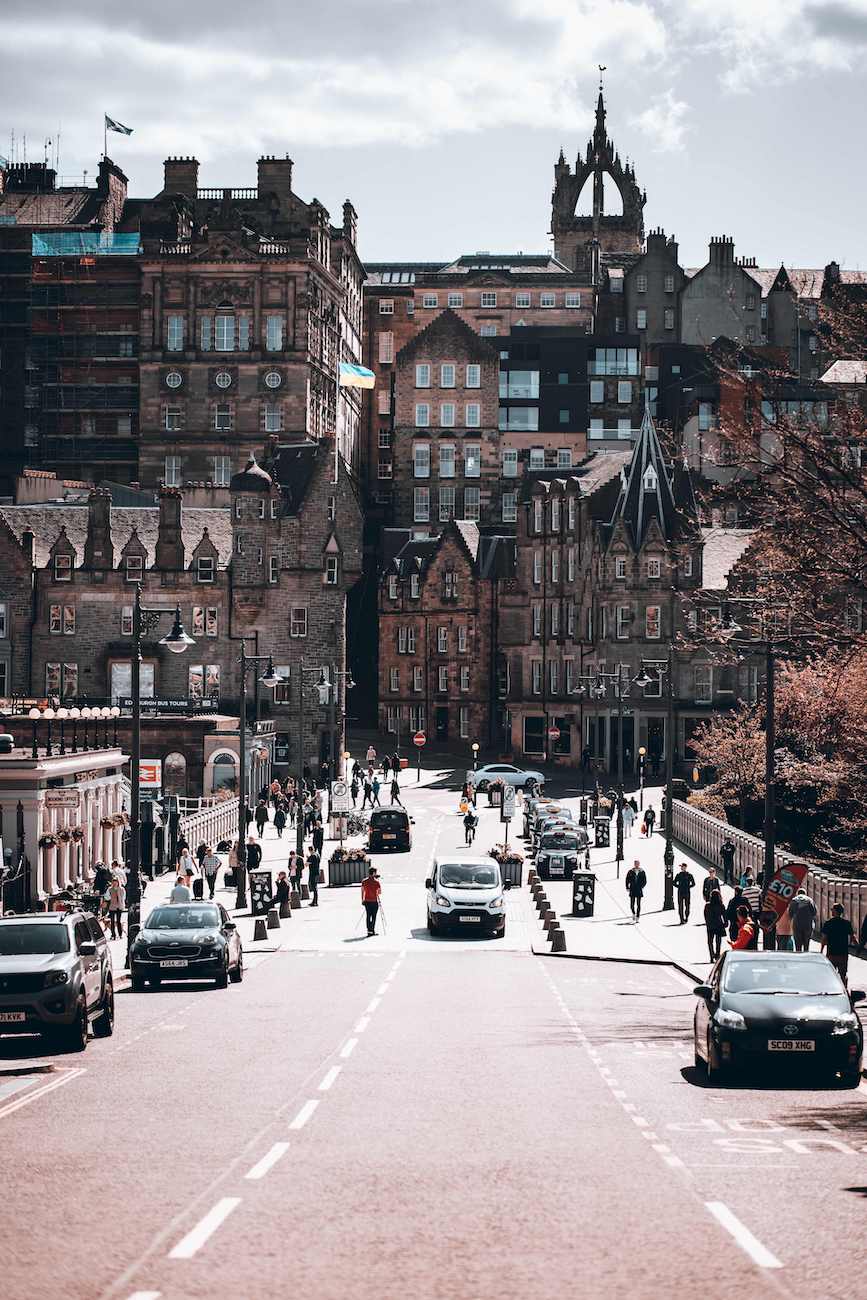
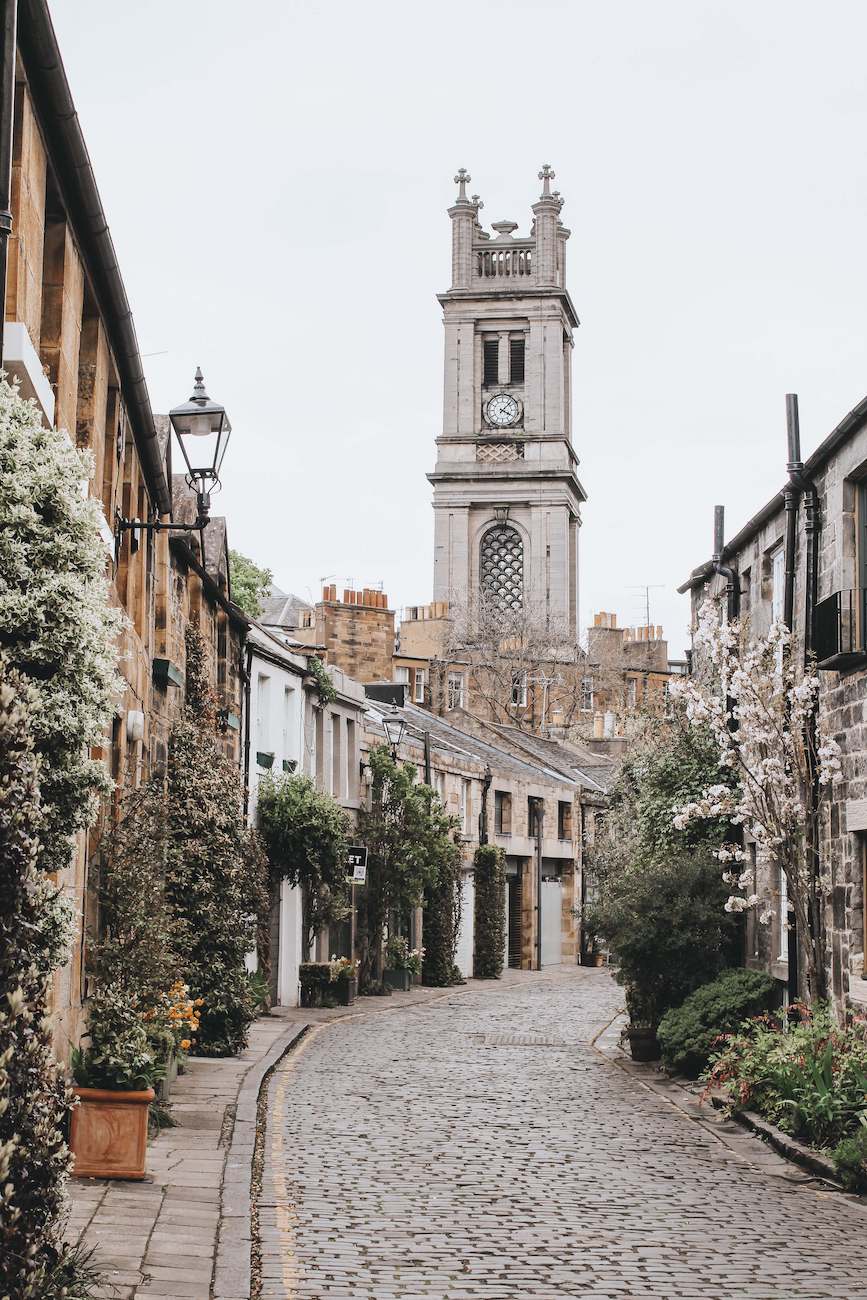
Edinburgh New Town is characterised by its long, wide boulevards, green areas, and elegant buildings. I recommend you take a stroll on the elegant George Street, the lively Rose Street, and Princess Street, the area’s main boulevard.
Like the Old Town, there are many must-see attractions in Edinburgh New Town. Which one you choose depends on your interests, and possibly also on the weather conditions.
- At The Georgian House on Charlotte Square, you can learn about daily life in New Town at the time it was built.
- The Scottish National Gallery, opened in 1859, houses a prestigious collection of works, including masterpieces by Botticelli, Guercino, Guido Reni, Gian Lorenzo Bernini, and the second version of Antonio Canova’s Three Graces.
- The Royal Scottish Academy hosts several temporary exhibitions of Scottish artists throughout the year.
Whatever you are craving for lunch, in New Town you’ll find a variety of delicious restaurants to suit all budgets. If you’ve never tried haggis (sausage made from sheep entrails), this is your chance!
Calton Hill
The New Town is home to Calton Hill, one of the city’s most famous landmarks and a must-see in Edinburgh. This hill, referred to by some as the Acropolis of the North, is not simply the best spot to get breathtaking views of Edinburgh, but it’s also a place rich in monuments. In Calton Hill, you can see:
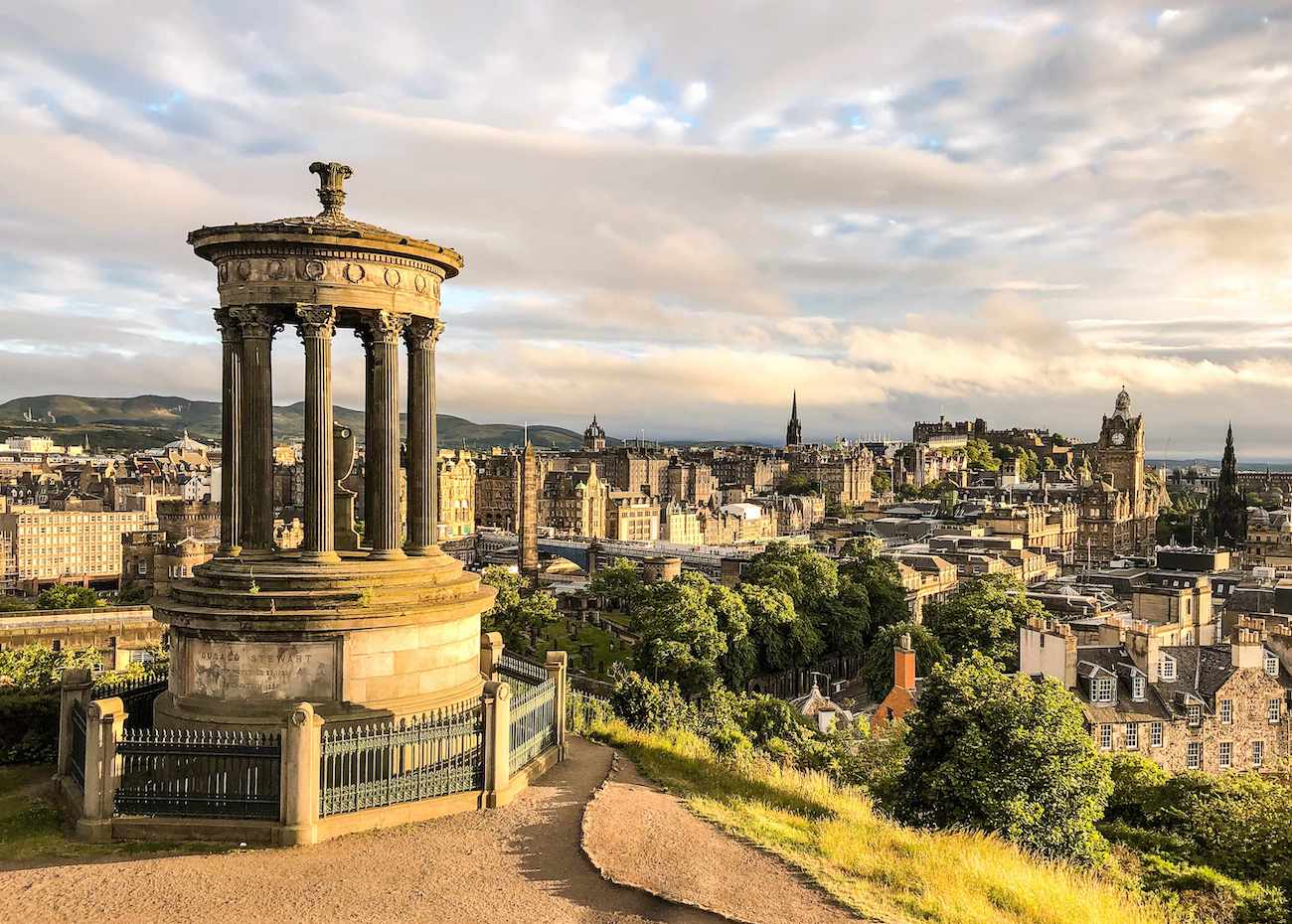
- The National Monument: the memorial that was built between 1826 and 1829 to pay tribute to soldiers and sailors who fell in the Napoleonic Wars and was inspired by the Parthenon in Athens.
- Nelson Tower, erected in honour of Vice Admiral Horatio Nelson after his victory at the Battle of Trafalgar.
- The City Observatory, a building that resembles a Greek temple and was designed by William Henry Playfair in 1818.
- The Dugald Stewart Monument, a small circular temple with nine Corinthian columns that often appears in photos taken at Calton Hill.
To reach Calton Hill, you need only climb a steep but not too long flight of steps starting near Princess Street.
Dean Village
If you have time, I suggest you visit the picturesque Dean Village. Once known as “Water of Leith Village”, for centuries, milling was the hamlet’s main activity. It was a separate village till the beginning of the 19th century when the area became gradually incorporated into the expanding Edinburgh New Town.
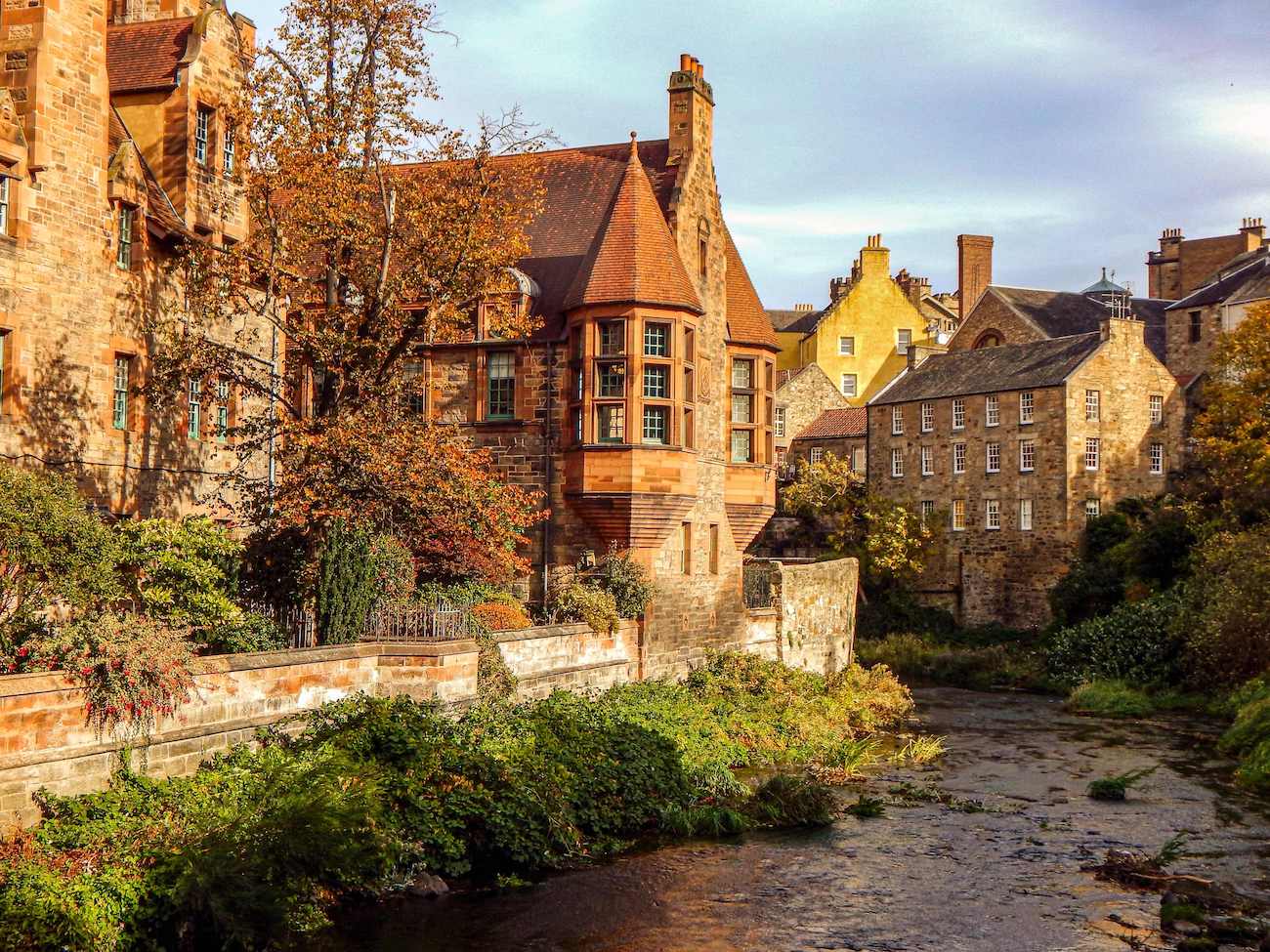
Today, Dean Village is a charming oasis, best discovered getting lost in the alleys, between quaint houses and a unique atmosphere.
Wrapping things up, there’s a lot to do and see in the Scottish capital, and a weekend in Edinburgh will pass in a heartbeat. You can follow this Edinburgh itinerary or take parts of it to plan the perfect 2 days in Edinburgh. The city is one of the most intriguing European capitals, and you’ll certainly love it!

Weekend in Edinburgh: Useful information

Getting there
Edinburgh airport connects over 150 destinations in Europe, North America and the Middle East. To find the best flight fares, I usually rely on Trip.com. If you’re spending only 2 days in Edinburgh, you won’t need a car. However, if your visit to the Scottish capital is part of an extended trip to Scotland, you may consider renting a car. Have a look at EconomyBookings to find the best rates.
Where to stay in Edinburgh
There are many hotels and accommodations in central Edinburgh. However, it’s also an expensive destination and, moreover, the best options are booked at lightning speed. Whenever I visited the city, the choice of somewhat affordable accommodations in the centre was very limited. Therefore, book your accommodation in Edinburgh as soon as you know your travel dates!
With only 2 days in Edinburgh, you’ll want to stay in the centre, with all the top attractions within walking distance. Here are a few good places to stay in Edinburgh:
- Ibis Edinburgh Centre Royal Mile – Hunter Square: an excellent 3* hotel in the heart of the Old Town.
- St Giles Royal Mile: Located on the Royal Mile, these 4-star apartments feature stylish interiors and spacious lounge areas. Edinburgh Castle is less than a 10-minute walk.
- Apex Grassmarket Hotel: centrally located in the trendy Grassmarket area with an excellent in-house restaurant (look for deals on Groupon), this chic hotel is a great base right behind the castle.
- The Hedges is a delightful guesthouse featuring charming rooms at affordable prices. It’s a little farther from the Old Town historical centre, but still within walking distance if you don’t mind a longer walk.
What to pack for a weekend in Edinburgh
Although you’ll likely travel with a carry-on only, there are a few essential items you shouldn’t forget to pack.
- A travel adapter to be sure to recharge your electronic items.
- A waterproof hardshell and a thin fleece jacket, even in summer (it’s not unusual to have weather conditions and temperatures changing several times during the day).
- If you have an expensive camera, don’t forget a dry bag to protect it from likely rainfall.
- I’ll never stress the importance of travel insurance enough. We all want to have the best time, even on a short trip, but things sometimes get wrong. It happened to me more than once (from lost luggage to sudden health issues), and having insurance coverage made things way less stressful.
Enjoy an unforgettable weekend in Edinburgh!
This post contains a few affiliate links to products and services. That means that if you make a purchase, I get a small commission at no extra cost to you.
Pin for later!
